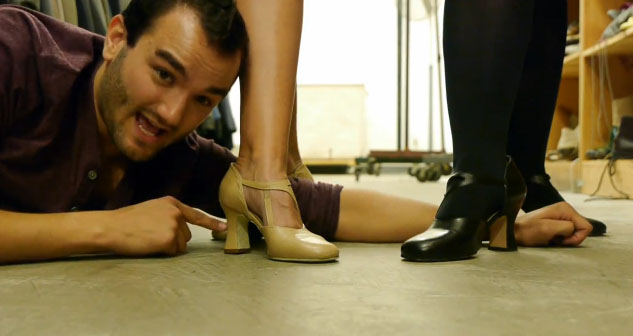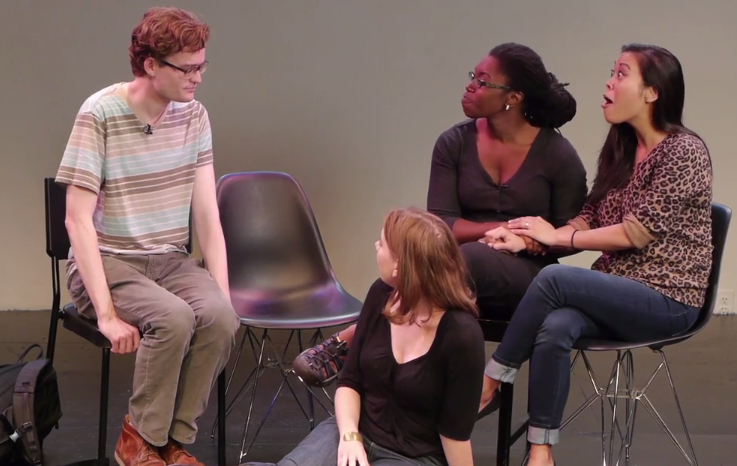Point us in the right direction.
Left vs. right. Easy, you say. But when you are standing in a theatre, which left are you talking about? Left as you look at the stage, or left as you peer out toward the audience? Those are two very different things. In fact, they are complete opposites.
So theatre people invented special terms to clear up the confusion. “Stage right” and “stage left” indicate the point of view of the performer standing in front of an audience. Their mirror images are “house right” and “house left,” which describe the same directions, but from the opposite side—as if you are looking at the stage. It’s the audience’s perspective, from where they sit in the house.
Simple, right?
Here’s where it can get confusing. Most of the time, theatre professionals stick with stage right and stage left when talking about what’s happening in the playing area, so that they don’t have to change words depending on which direction they’re facing.
So let’s say you are working on a show. You’re sitting in the audience watching a rehearsal. The director tells you, “Keep an eye out for when the villain sneaks in from stage left.” Remember, that’s left from the performers’ point of view, not yours. Look to your left by mistake—stage right—and you’ll miss it.
Once you get used to them, stage right and stage left become second nature, no matter which direction you are facing.
–Ben Pesner
This video was made by Theatre Development Fund.
Here’s the team:
Theatre Development Fund is the nation’s largest not-for-profit service organization for the performing arts. Through a variety of programs and services that promote education, access and conversation, it ensures an enduring appreciation of and engagement with live theatre. In addition to operating the TKTS booth in Duffy Square and the satellite booths at South Street Seaport and in downtown Brooklyn, TDF’s theatre education, accessibility, affordable ticketing and audience development programs help to make the unique experience of theatre available to diverse audiences while supporting New York’s theatre industry. Since it was founded in 1968, TDF has provided over 80 million people with access to performances at affordable prices while returning over $2 billion in revenue to thousands of productions.

